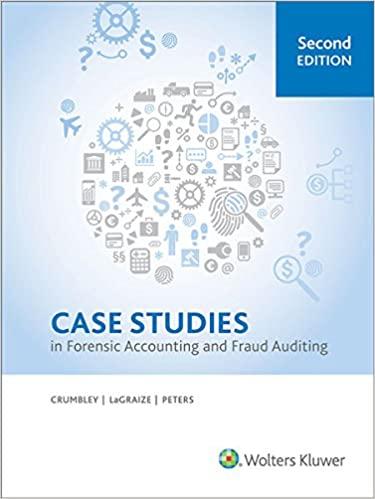


ho lodo The Business Case for PFM wwwwwwwwwwwww Question (3): From what you have learned about the concept of macro and stakeholder environment for FIs, answer the following: (8 marks) a. Discuss the factors exist in the macro and stakeholder's environment? Support your answer by an illustration. (4 marks) Question 4 (10 Points) B1, C1 During the year 4,000 units of product F was produced as byproduct and the total expected value of this product was $5,000 ($1.25/unit); the total produced units from the main product was 20,000 units each unit costs $5. Instruction: 1- Prepare the income statement under the production method if the company sold 10,000 units from the main product at $20 per unit. (5 Points) 2- Prepare the income statement under the sales method if the company sold 6,000 units from the main product at $20 per unit and 2,000 units from X. (5 Points) Question 3: (10 points) B1, C1 During 2019 Zoom Company produced two kinds of products after splitoff point (C1, HI) the joint cost was $40,000 and the separable cost was C1 $20,000; HI $80,000. Instruction: If you have the following information: Before splitoff Point Processing after (Joint Cost) splitoff point (Separable Cost) Item C1 H1 Beginning Inventory Production (during the 45,000 75,000 30,000 40,000 period) Ending Inventory 0 0 10,000 20,000 Sales 20,000 20,000 Selling price per Gallon 12 12 20 40 0 C1 Total 1- Allocate the joint cost to the products (use net realizable value) Item HI Sales value Separable cost Net realizable cost Allocating Rate Joint Cost Allocated Cost Allocated per unit H1 Total 2- Calculate the gross profit margin rate (GMR). Item Sales revenue COGS Gross profit Margin GMR Question 2 (10 points) B1, C1 ABC Manufacturing Corporation use process costing system. During 2019 the company produced 20,000 units of a product; the beginning inventory was 10,000 units (materials $20,000 with 100% completion rate and conversion cost $50,000 with 40% completion rate); the ending inventory was zero. The company consumes the following costs during the period: Material S400,000 and conversion cost $500,000. Instruction: Prepare the process costing schedule. Flow of Production (1) Total Equivalent Units (2) Materials Conversion costs Work in process (Beginning Inventory) 1/1 Started During Current period To account for Completed and Transferred out Work in process (Ending Inventory) 31/12 Accounted for (3) Cost of 1/1 Cost add during the period Total costs to account for Cost per equivalent unit Assignment of cost: Completed and transferred out Work in process 31/12 Total cost accounted for ho lodo The Business Case for PFM wwwwwwwwwwwww Question (3): From what you have learned about the concept of macro and stakeholder environment for FIs, answer the following: (8 marks) a. Discuss the factors exist in the macro and stakeholder's environment? Support your answer by an illustration. (4 marks) Question 4 (10 Points) B1, C1 During the year 4,000 units of product F was produced as byproduct and the total expected value of this product was $5,000 ($1.25/unit); the total produced units from the main product was 20,000 units each unit costs $5. Instruction: 1- Prepare the income statement under the production method if the company sold 10,000 units from the main product at $20 per unit. (5 Points) 2- Prepare the income statement under the sales method if the company sold 6,000 units from the main product at $20 per unit and 2,000 units from X. (5 Points) Question 3: (10 points) B1, C1 During 2019 Zoom Company produced two kinds of products after splitoff point (C1, HI) the joint cost was $40,000 and the separable cost was C1 $20,000; HI $80,000. Instruction: If you have the following information: Before splitoff Point Processing after (Joint Cost) splitoff point (Separable Cost) Item C1 H1 Beginning Inventory Production (during the 45,000 75,000 30,000 40,000 period) Ending Inventory 0 0 10,000 20,000 Sales 20,000 20,000 Selling price per Gallon 12 12 20 40 0 C1 Total 1- Allocate the joint cost to the products (use net realizable value) Item HI Sales value Separable cost Net realizable cost Allocating Rate Joint Cost Allocated Cost Allocated per unit H1 Total 2- Calculate the gross profit margin rate (GMR). Item Sales revenue COGS Gross profit Margin GMR Question 2 (10 points) B1, C1 ABC Manufacturing Corporation use process costing system. During 2019 the company produced 20,000 units of a product; the beginning inventory was 10,000 units (materials $20,000 with 100% completion rate and conversion cost $50,000 with 40% completion rate); the ending inventory was zero. The company consumes the following costs during the period: Material S400,000 and conversion cost $500,000. Instruction: Prepare the process costing schedule. Flow of Production (1) Total Equivalent Units (2) Materials Conversion costs Work in process (Beginning Inventory) 1/1 Started During Current period To account for Completed and Transferred out Work in process (Ending Inventory) 31/12 Accounted for (3) Cost of 1/1 Cost add during the period Total costs to account for Cost per equivalent unit Assignment of cost: Completed and transferred out Work in process 31/12 Total cost accounted for











